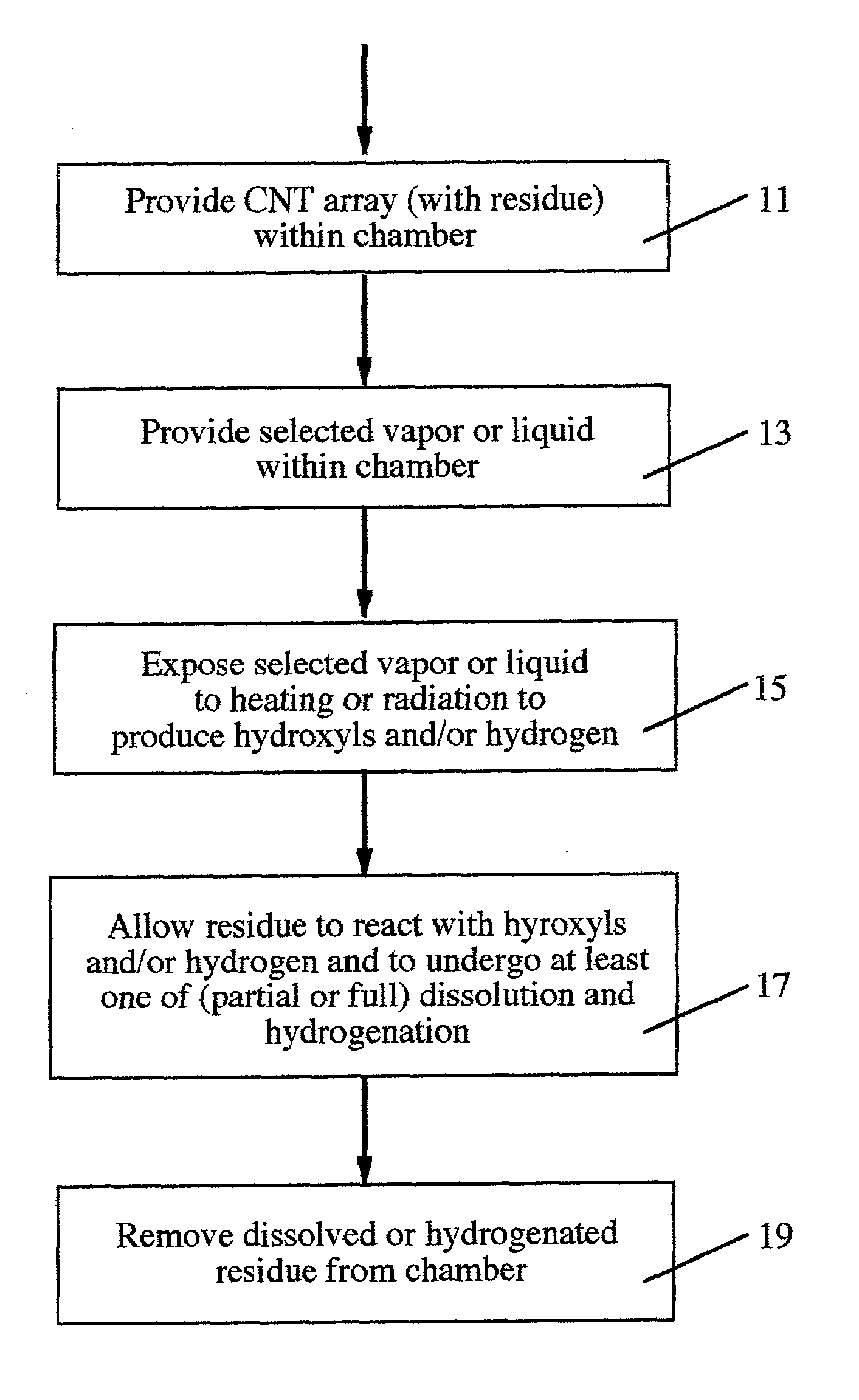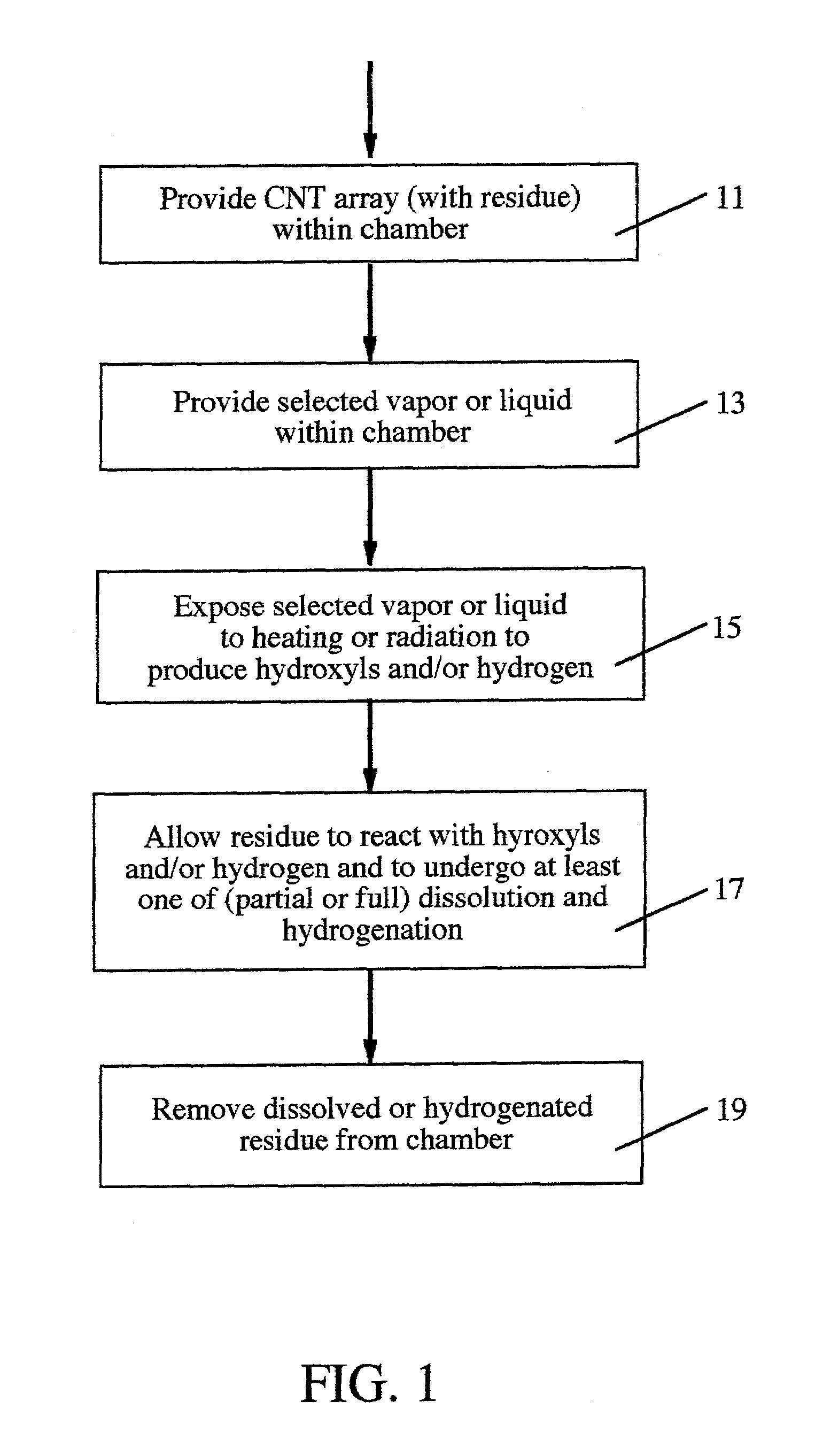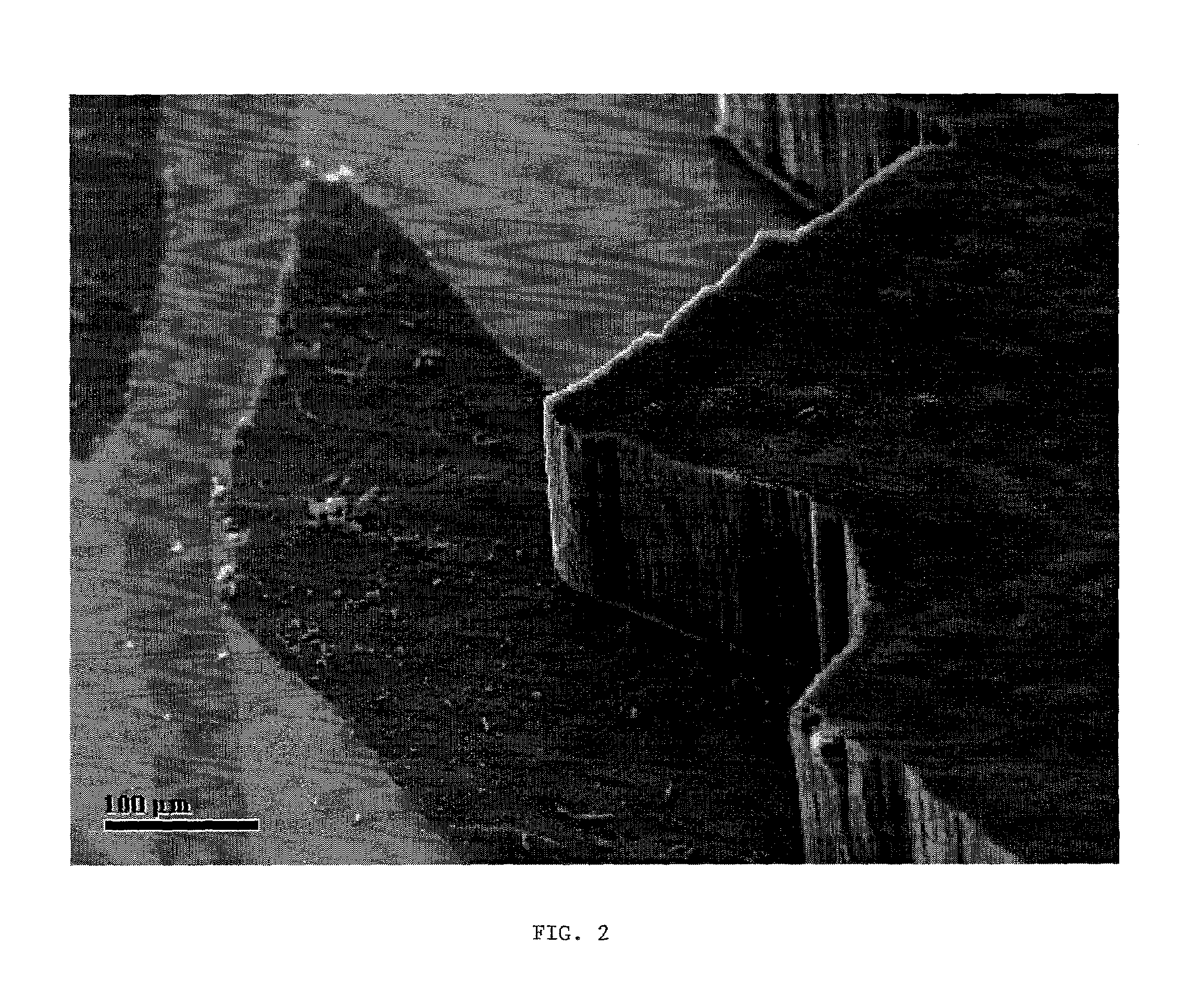Carbon nanotube purification
a carbon nanotube and purification technology, applied in the field of carbon nanotube growth and cleanup, can solve the problems of damage to the cnt, long time-consuming and labor-intensive, and inability to select the techniques, and achieve the effect of relatively easy separation
- Summary
- Abstract
- Description
- Claims
- Application Information
AI Technical Summary
Problems solved by technology
Method used
Image
Examples
Embodiment Construction
[0012]FIG. 1 is a flow chart of a method for practicing the invention. In step 11, an array of CNTs is provided within a chamber. The CNT array may have residues, including but not limited to amorphous carbon and metal particles, adjacent to or on one or more of the CNTs in the array. In step 13, a selected vapor of liquid, including at least one of H2O and H2O2, is provided within the chamber. In step 15, the selected vapor or liquid is exposed to heating or to radiation to produce at least one of H, H+, OH and OH−. If the source of hydroxyls or hydrogen is H2O2, the source should also be substantially free of halogens and alkali halides, if hydroxyls are desired. Presence of a halogen (e.g., Br2) or of an alkali halide (e.g., KI) will cause H2O2 to preferentially dissociate (undesirably) into H2O and (½)O2, rather than into OH+OH. An example of a dissociation reaction for H2O2 in the presence of a halogen is discussed by P. W. Atkins in General Chemistry, Scientific American Books...
PUM
| Property | Measurement | Unit |
|---|---|---|
| pressure | aaaaa | aaaaa |
| pressure | aaaaa | aaaaa |
| frequency | aaaaa | aaaaa |
Abstract
Description
Claims
Application Information
 Login to View More
Login to View More - R&D
- Intellectual Property
- Life Sciences
- Materials
- Tech Scout
- Unparalleled Data Quality
- Higher Quality Content
- 60% Fewer Hallucinations
Browse by: Latest US Patents, China's latest patents, Technical Efficacy Thesaurus, Application Domain, Technology Topic, Popular Technical Reports.
© 2025 PatSnap. All rights reserved.Legal|Privacy policy|Modern Slavery Act Transparency Statement|Sitemap|About US| Contact US: help@patsnap.com



